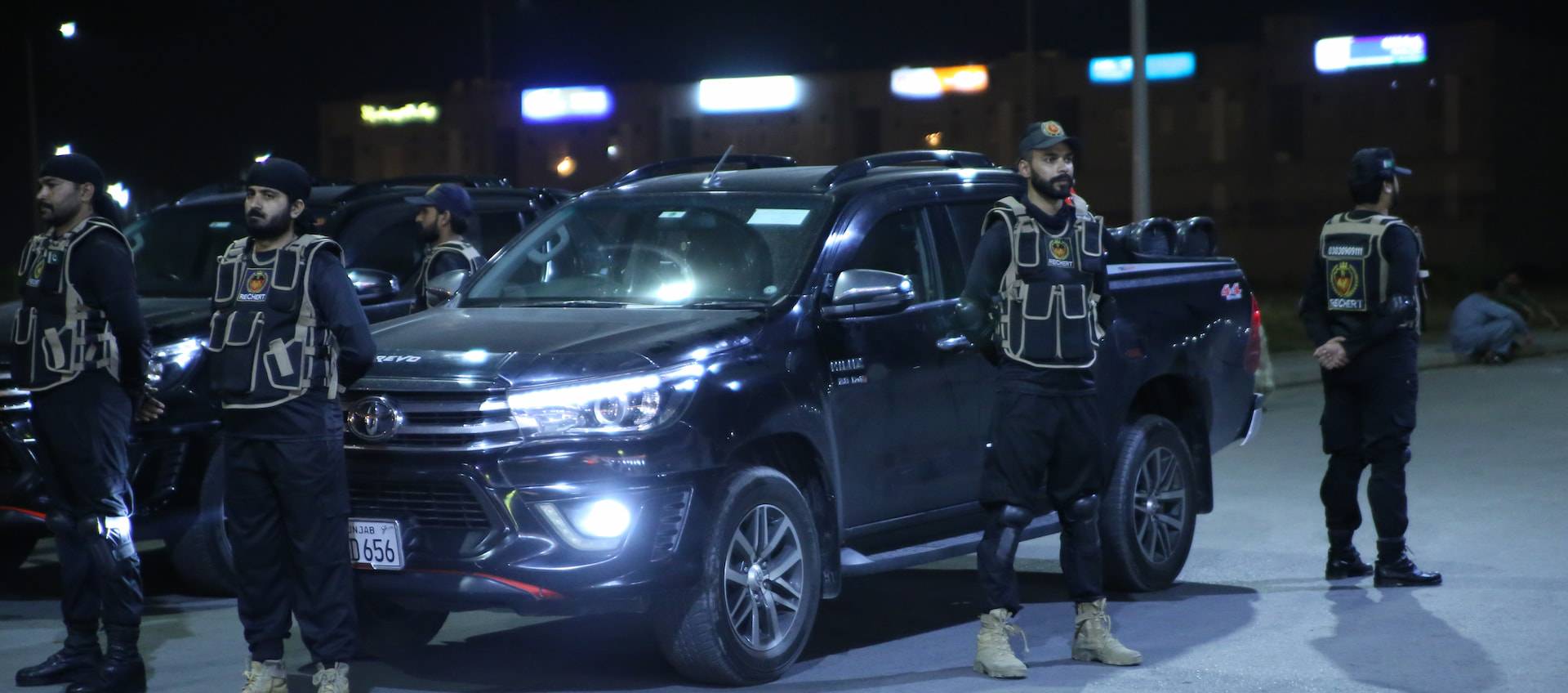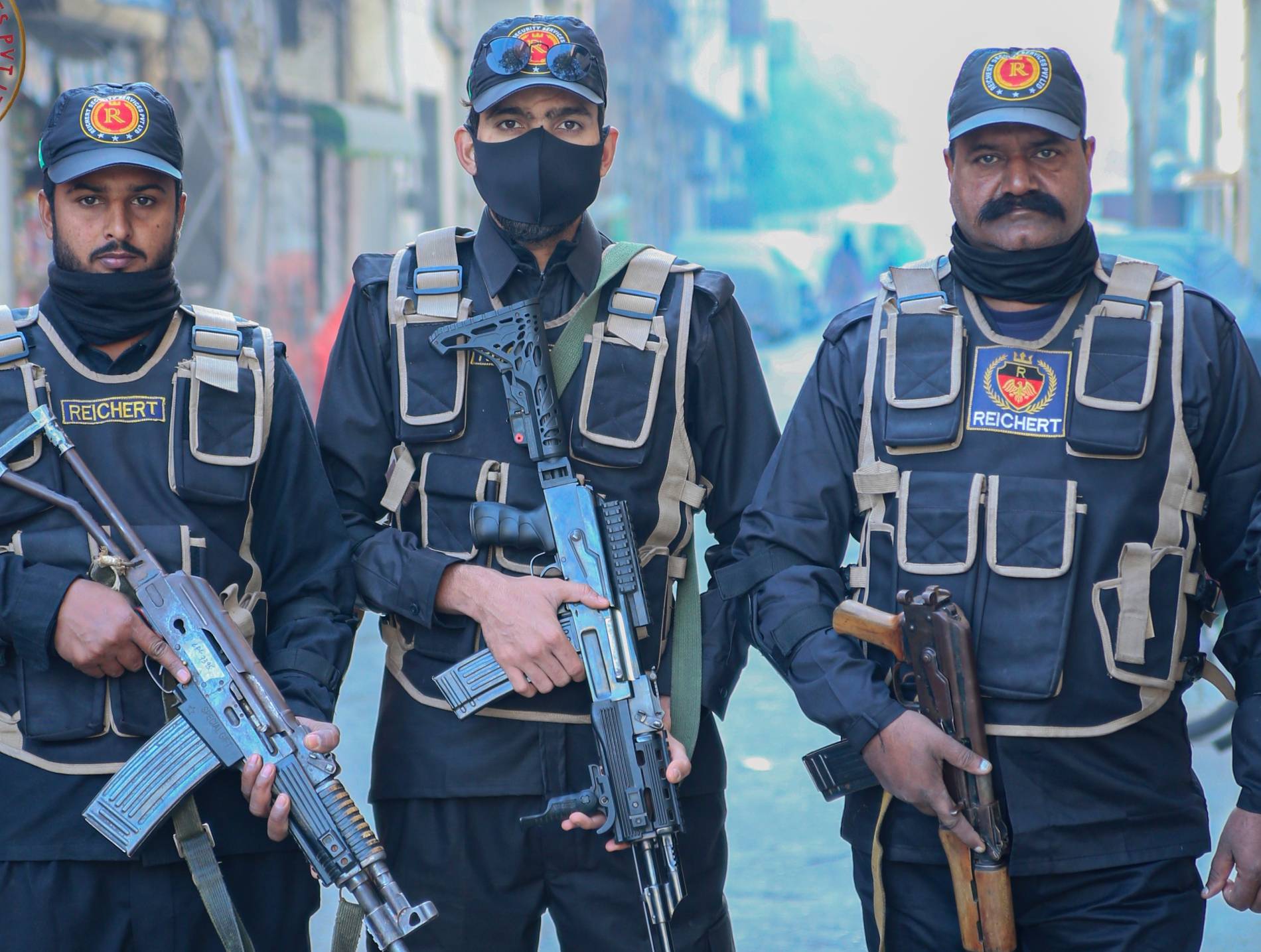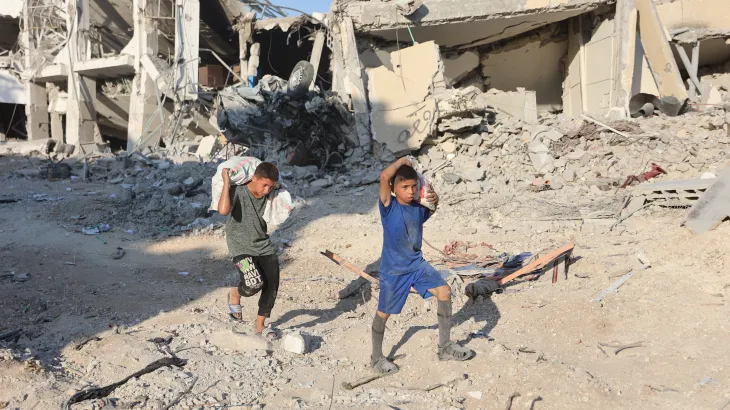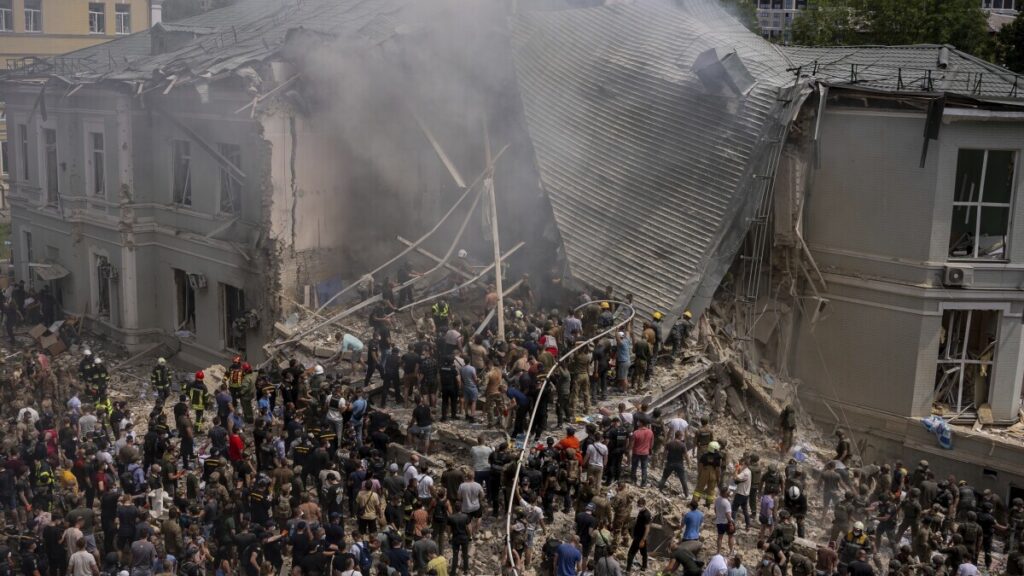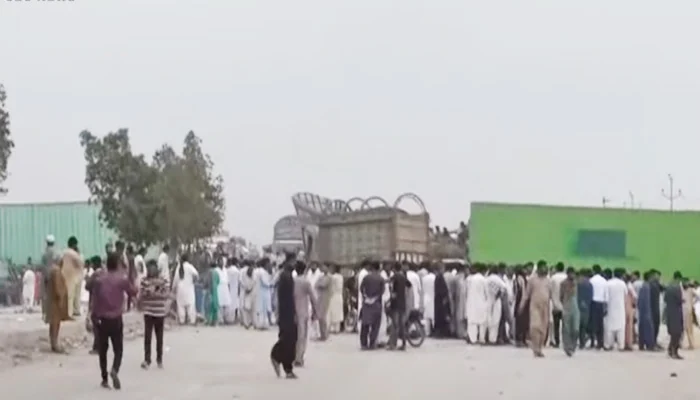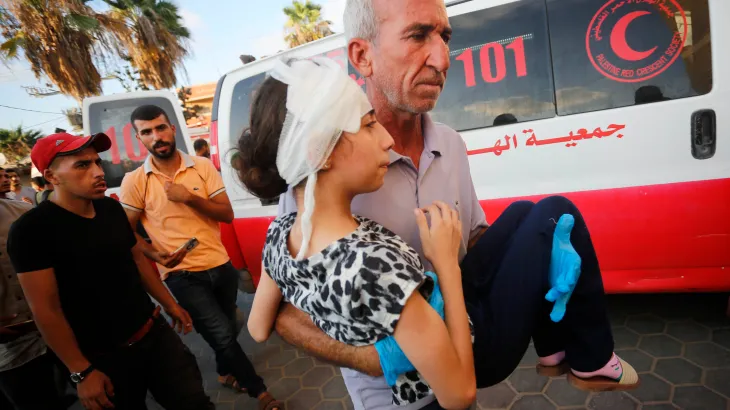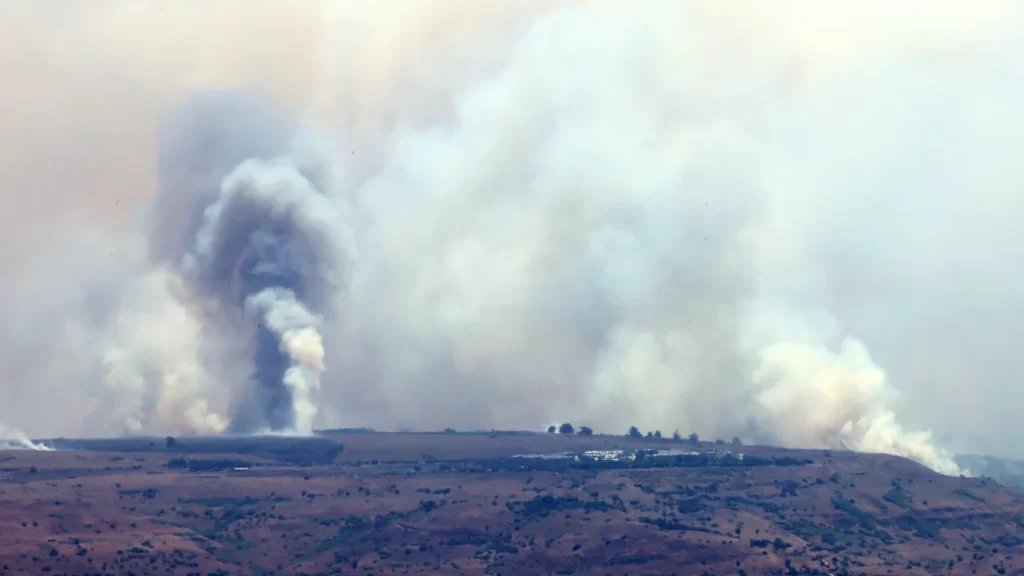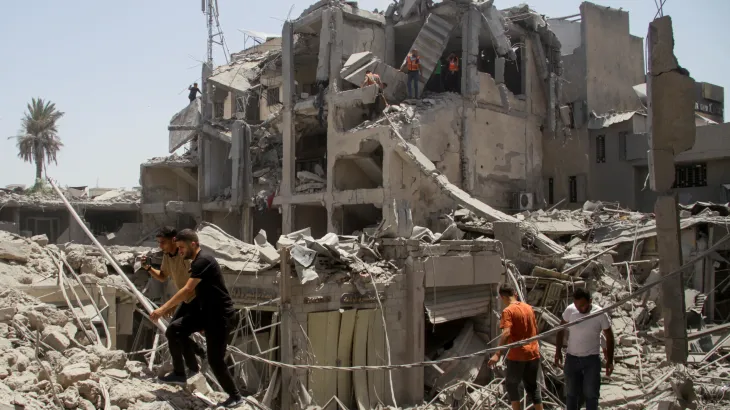A Russian missile strike partially destroyed a children’s hospital in Kyiv on Monday, causing terrified patients and their families to flee for their lives, as officials fear more people could be trapped beneath the rubble. Moscow launched a brazen daytime aerial assault on targets in cities across Ukraine during morning rush hour, killing at least 39 people, according to Ukrainian Interior Minister Ihor Klymenko. Search and rescue operations continued into Tuesday after the large-scale bombardment struck areas in the capital, as well as in Dnipro, Kryvyi Rih, Slovyansk and Kramatorsk. The death toll includes 29 people in the capital, Klymenko said in an update Tuesday. Earlier, Ukraine’s State Emergency Service said four children were among the dead after a boy’s body was found under the rubble in the capital’s Shevchenkivskyi district. Two people were killed and at least 16 others injured in the strike on Kyiv’s Okhmatdyt hospital. The facility is Ukraine’s largest children’s medical center and has been vital in the care of some of the sickest children from across the country. Every year, around 7,000 surgeries – including treatments for cancer and hematological diseases – are conducted at the hospital, according to Ukraine’s human rights ombudsman Dmytro Lubinets. Videos from the scene of the children’s hospital showed volunteers working with police and security services to sift through the rubble as smoke billowed from the hospital, as staff described how they tried to rush children to safety in the wake of the attack. Two floors of the hospital were demolished, comprising an area of 400 square meters (4,300 sq ft), the emergency service said, while Ukraine’s health minister Viktor Liashko said intensive care units, oncology departments and surgery units had been damaged. More than 600 patients were evacuated from the hospital, with more than 100 transferred to other healthcare facilities, Liashko said, according to state news agency Ukrinform. “The key task here is to get people out of the rubble and provide assistance to those we can reach, as we have already taken out all the first ones,” Liashko said in a Telegram post. RELATED ARTICLE‘ Huge disappointment’: Zelensky blasts Modi meeting with Putin the same day Russian attack devastates Ukraine hospital The attacks were part of a rare daylight bombardment on Ukrainian cities, some of which are heavily populated areas far from the front lines. It came a day before US President Joe Biden hosts a crucial NATO Summit in Washington, where new announcements over the alliance’s military, political and financial support for Kyiv are expected. Biden called the strikes a “horrific reminder of Russia’s brutality.” “It is critical that the world continues to stand with Ukraine at this important moment and that we not ignore Russian aggression,” Biden said, noting that he would meet with Zelensky during the summit “to make clear our support for Ukraine is unshakeable.” “Together with our allies, we will be announcing new measures to strengthen Ukraine’s air defenses to help protect their cities and civilians from Russian strikes,” he added. Meanwhile, seven people were killed in a Russian attack Monday on a private medical facility in Kyiv belonging to the Adonis network, the company said. Of those killed, five were staff members and two were patients, Adonis said. Russia’s defense ministry on Monday claimed that Moscow had struck “military industrial facilities of Ukraine and air bases of the Ukrainian armed forces” using long-range, high-precision weapons. Doctors and bystanders help clear debris following the strike. Gleb Garanich/Reuters Eyewitnesses recount hospital strike Natalia Sardudinova, a senior nurse, described the moment the strike hit the children’s hospital, saying that “it was scary, but we survived.” “It was loud, the windows were crunching,” she told CNN. “As soon as the alarm sounded, the children were taken out into the corridor.” She said two children had been in the operating theaters at the time of the blast, and both were relocated to the basement shelter once their procedures were completed. “Everything was in smoke, there was no air to breathe. The doctor was cut by shrapnel. The windows and doors were blown out. One nurse in the hospital was heavily injured,” Sardudinova added. “My hands are still shaking. They don’t let anyone in now, they are afraid it will collapse.” Yulia Vasylenko, the mother of an 11-year-old cancer patient at the hospital, said her son Denys was evacuated outside following the strike. “My son is on painkillers. He has cancer. He has been without medication for half a day. He was brought down the stairs from the third floor. There was smoke (and) heavy dust,” she said. Iryna Filimonova, a senior nurse at the pediatric urology department, told CNN an operation on a 2-year-old was underway when the strike happened. “The lights went out, everything went out. We pulled out the instruments, shining flashlights. Everything was sewn up quickly,” Filimonova said. “The baby was brought down (to the shelter). I immediately ran to help clear the rubble. Some of my nursing colleagues who worked in the operating theaters and some doctors were cut by glass fragments. Our department was destroyed.” Another operating theater nurse, Oksana Mosiychuk, said they sheltered in the emergency room when the explosion rocked the building. After that, she added, the medical team had to extinguish a blaze that broke out in their department, including an operating table which had caught fire. “Fortunately, everyone is alive. One of our colleagues was heavily injured, he had numerous cuts and shrapnel wounds, and was taken away by an ambulance. I also have minor shrapnel wounds, but I’m fine. It was very scary. I was scared for the children,” she said. A UN team who visited the site after the strike saw children “receiving treatment for cancer in hospital beds set up in parks and on streets, where medical workers had quickly established triage areas, amongst chaos, dust and debris,” the UN’s human rights chief Volker Turk said in a statement. “Shockingly, one of the strikes severely damaged the intensive care, surgical and oncology wards of Okhmatdyt, which is Ukraine’s largest children’s referral




